Pests are the most common reason behind a plant’s damaged foliage, and if the infestation is high, then it may lead to plant death; I have seen some greenhorn plant parents not even recognize that pests infest their plant, and slowly, the plant’s foliage dies, and they didn’t even know the problem behind it. If you are growing scented beauties in a yard or garden, you must understand about jasmine plant pests to enjoy jasmine blooms without any problem.
If you are witnessing bitten leaves, leaf damage, or galls ( where pests lay their eggs ) on your jasmine plant, prepare yourself to deal with & deter these pesky pests from your blooming beauties. You can easily control these pests if you have detected them early.
Here, you will get information about all the jasmine plant pests and proper guidance about their treatment using pesticides and homemade remedies. We will also share tips on how to use these treatments in such a way that you kill the beneficial insects in your garden. So, let’s start.
Jasmine Plant Pests Pictures
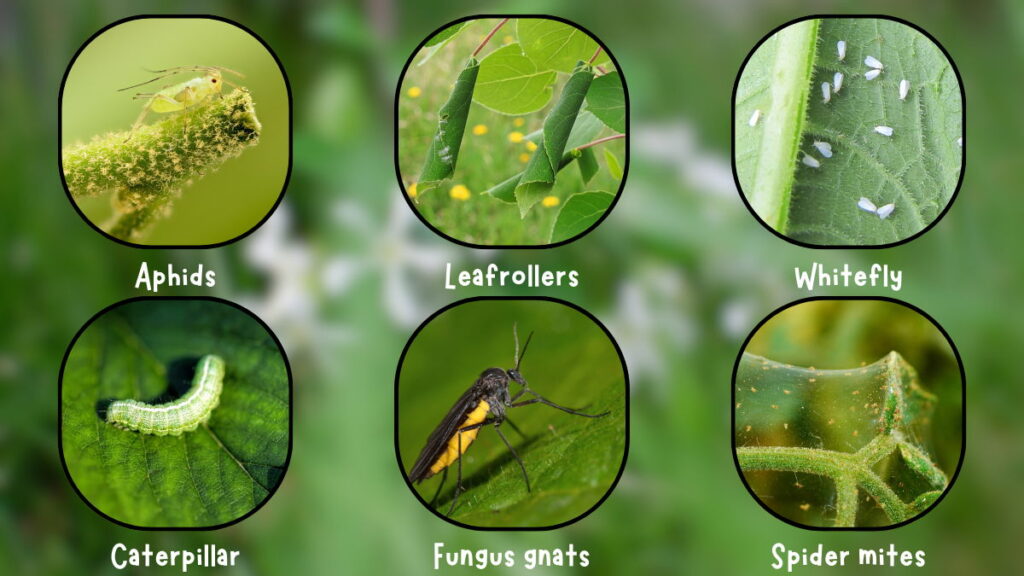
Jasmine Plant Pests Symptoms
Different pest attacks will show various symptoms on your plant; you must monitor them to detect them. You can easily detect aphid colonies with your naked eyes, and when they attack your plant foliage, it starts seeing symptoms like yellowish foliage and stunted shoots in your jasmine plant.
Jasmine Plant Pests
Aphids
Aphids are not that dangerous for your plant until they possess your entire jasmine plant; these tiny pests may look different to you because of their color range, like green, yellow, brown, grey, black, or red.
They start breeding in winter and lay their eggs, and in spring, their eggs start hatching and start feeding on the sap for your jasmine plant, and this cycle continues.

When feeding, Aphids also devour the plant’s buds, which will never bloom or spread its sweet fragrance. When you start seeing curled leaves, pale foliage, and stunted plant growth, you must take action, or in the worst-case scenario, your jasmine plants will die.
Aphids also secrete honeydew, which is not harmful but can attract different insects that may harm your plant. Also, because of this sticky substance, leaves stick together, which can trigger the growth of a fungus named Sooty mold in the plant.
Treatment
- Regular Monitoring – The first and primary treatment is monitoring your plant and manually pruning the leaves and stems when infestation is at an early stage. You don’t have to spend extra time monitoring; you can do that while watering or fertilizing your jasmine plant.
- Removing Weeds – Some weeds, like sow thistle & mustard, invite aphids and can attack your jasmine plant from there.
- Shoot Them With Pressure Water Spray – While showering your plant, you can knock aphids out of your plant using a high-pressure water spray.
- Natural Enemies – Remember what I have written in the above paragraph: hard pesticides can kill valuable insects in your garden; insects like lady beetles, lacewings & waps feed on aphids and reduce their number naturally.
- Natural Pesticides – You can use neem-based pesticides or natural insecticidal soap to control aphids, but it will not work as magic, and you have to spray periodically. It slowly kills them. Spray the solution on both the upper and lower sides of the leaf.
- Hard Pesticides – I will only prefer using these pesticides when there is no option left and infestation is uncontrollable because these pesticides can kill beneficial insects living on your plant.
Common Pesticides – Acephate, Permethrin, Bifenthrin
Caution – Don’t use these pesticides on the blooming jasmine plant.
Caterpillar
Assume you have planted a gorgeous Arabian jasmine plant in your yard and done everything to keep that plant healthy.
When the time comes to get rewarded with alluring & scented flowers, your plant gets attacked by caterpillars, who dig every leaf and bud of your plant. Yes, I can understand your frustration level.
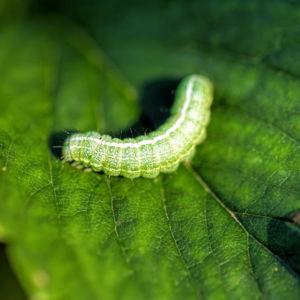
If you are witnessing multiple edge-bitten and wilted leaves on your plant, then immediately check your plant for these pests. It’s tough to catch an early breach, but you must keep an eye on your plant, especially the potted ones because caterpillars can severely damage them.
Treatment
- Natural Homemade Treatment – This is an early precaution spray for your jasmine plants that work as a repellent; take a few kinds of garlic, make a paste, and mix it with 1 teaspoon of dish soap, 1 tablespoon of molasses, and 1 liter of lukewarm water and spray it on the leaves and stem of the plant caterpillars hates the pungent smell of garlic.
- Manual Control – If the infestation is not that massive, you can manually prune the leaves or stems or handpick the caterpillars from the plants.
- Organic Products – You can also use pyrethrin or Bacillus thuringiensis-based products to deter caterpillars from your jasmine plant.
- Natural Predators – If your jasmine plant is planted outdoors, you might get help from birds, hedgehogs, and spiders to control these pests. Guess what? It’s free of cost, and you don’t have to make any effort for it.
- Pesticides – If the invasion is controllable and your plant suffers too much, you must pick up anti-caterpillar pesticides at your nearest garden stores.
Leafrollers
Leafrollers are nothing else but tiny caterpillars of brown or green color. When these pests invade a plant, they start making a nest, rolling the leaves off and knitting it with the silk they produce. It starts eating the leaf from inside and can also target the jasmine buds.
They will not severely damage your plant unless and until they are in large numbers. With high populations, they will quickly defoliate your plant in no time.

Treatment
- Manual Treatment – Prune the rolled leaves, and if you want to kill them, prepare a soapy water bucket and throw them into the bucket. Recheck the plant that you haven’t left any caterpillars behind.
- Pesticide – If the population is uncontrollable, I suggest you use Bacillus thuringiensis because any spraying pesticide will not be that effective.
Mealybugs
A few years ago, mealybugs were considered minor pests but were upgraded because of sudden environmental changes and are now considered significant.
Species named M.hirsutus can host 76 different plant families and over 200 genera. They target the leaves, stems, and roots of the jasmine plant and devour by sucking the sap of plants.
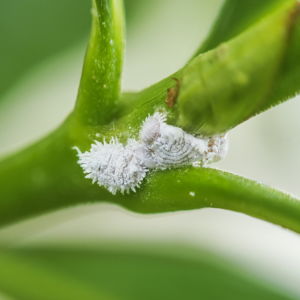
Mealybugs have a white waxy appearance and are 3-4 mm long; they can easily infect other plants by simply crawling from one host plant to another. They can also get transported by wind and rain.
When mealybugs attack your jasmine plant, you will see withered and yellow leaves and less flowering, and if the infestation is high, your plant starts defoliating and, in the worst case, death of the plant.
Treatment
- Controlling ants – Ants transport mealybugs from one stem to another and even on other plants. Without the help of ants, they can’t grow their population fast, and there will be fewer chances of massive infestation.
- Weed Removal – Weeds and debris invite mealybugs. They act as host plants, So removing weeds around your plant is crucial to lower the chances of a mealybug attack.
- Natural Predators – Other insects like beetles and Australian ladybirds are natural enemies of mealybug nymphs.
- Chemical Treatment – To control the Ant army in your garden, you can use chlorpyriphos 20 EC. To apply this pesticide, mix 2.5 ml in 1 liter of water. Inorganic oil emulsion spray also helps in controlling mealybugs.
Fungus gnats
If you have planted your jasmine plant in a pot, you must keep your eyes open for fungus gnats; fungus gnats love moisture and are ⅛ inch flies with a black or greyish appearance.
Typically, you will detect them flying around your jasmine plant. In their breeding season, they lay larvae on the top inch of the soil, which can damage your plant.
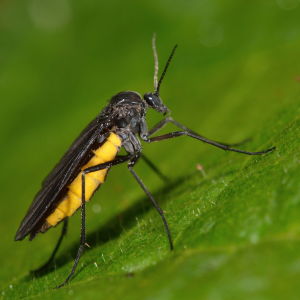
If you see gnats fluttering around your jasmine plant, then you must check your plant for symptoms like wilting, lousy growth, and yellow foliage. Then, it’s time to take action.
Treatment
- Traps – For flying gnats, you can set up traps like sticky cards, which are pretty good against flying gnats; you can easily capture adult gnats using this method.
- Let the soil dry – Moist soil attracts fungus gnats to lay eggs on the top inch of the soil; let the soil dry between watering to decrease the chances of breeding.
- Insecticides – Organic pesticides like neem oil are ineffective on fungus gnats. It would help if you chose long-lasting insecticides for the upper layer of soil to tackle fungus gnats at an early stage.
Whitefly
Whiteflies are covered with a white waxy substance; they breed in warm temperatures and extend their population in no time.
The greenhouse whitefly is shared among all the species, and sweet potato whitefly can target more plants than any other whitefly.
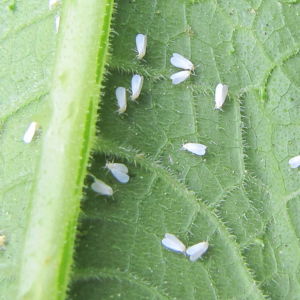
Whiteflies thrive on sucking the sap from the plant’s phloem; when these pests devour your jasmine plants, the foliage starts turning pale like aphids. Whiteflies also secrete sticky honeydew that increases the chances of growing sooty mold.
Tip – If whiteflies repeatedly target your jasmine plant with a massive population after applying all the treatments, it is time to say goodbye to your plant.
Treatment
- Early precaution – Massive whitefly attack is brutal to handle. That’s why taking early precautions is better than using harsh pesticides, which means you don’t have to invest time in tackling these pests and taking hard steps.
- Natural Enemies – Bigger insects like wasps and beetles are their natural enemies, which help compress the populations of whiteflies. Using problematic chemical insecticides can kill these insects.
- Organic Pesticide – Pesticides like insecticidal soaps and neem are effective when infestation is low. You can also use high-pressure water spray and yellow sticky traps to tackle these pests.
- Reflective Mulches – You can try reflective clear plastic mulch with silver paint to repel whiteflies. These shiny metallic construction papers are available online or in nearby garden stores.
Spider mites
Spider mites are common garden pests that can quickly breed and thrive in hot weather. This pesky pest is relative to ticks and spiders.
Spider mites usually target the jasmine plant’s lower part and slowly start moving upward after doubling themselves.
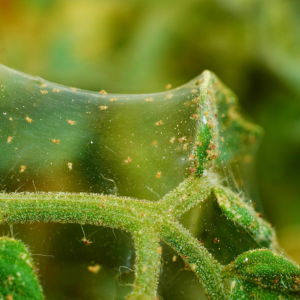
Plants, when attacked by spider mites, start showing symptoms like yellowing of the leaves, but other reasons also cause it; if you look closely, you will detect tiny yellow spots on the plant’s leaf, or some plant species develop a brownish cast on its leaf. You will also witness fine webbing & skins shed by spider mites on the leaves.
Treatment
- Manual Control – When the population is low at an early infection, you can easily pinch off the infested leaves or prune the stem from the jasmine plant. You can also shoot them off from the plant with a high-pressure water spray.
- Less Harmful Way – Spraying insecticidal soap repeatedly after 3 days on the leaf’s upper and lower sides will help control spider mites. You can spray neem oil solution to deter these pests ( avoid them in flowering season ).
- Pesticidal Spray – Many chemical products are available in the market that are reliable against spider mites. Read the product label to learn how to use insecticides properly.
Thrips
Thrips are tiny pests with trimmed wings that devour by sucking plant cells and pollen of the flower. Thrips have a glassy white, yellow, brown, or black appearance.
They can easily host new plants by traveling with the help of wind. You will notice scars and stunted growth when these pests attack the plant.

Thrip colonies will damage leaves and young shoots of the jasmine plant and affected leaves will roll inward. Leaves also start drying; in summer, the condition would be more severe when plants are already under water stress. In breeding season, thrips lay eggs under the tissue of the soft leaves.
Treatment
- Manual Pruning: When the population of thrips is low, you can quickly identify the infested stem or leaf and prune them manually with the help of shears.
- Spraying water: While watering your jasmine plant, you can shoot out thrips by shooting water on them. ( Spray water on both the upper and lower sides of the leaf )
- Insecticidal Soap: Using insecticidal soap like Sulfer also helps control the thrips population. To apply it, make a solution of 1 tablespoon of soap in 1 liter of water and spray it on your infected jasmine plant.
- Diatomaceous Earth: It’s a powder made from the fossil remains of diatoms. The small partials of the fossils are sharp-edged, slashing the thrips’ upper skin. Sprinkle the powder on the plant leaves and soil to eliminate these pests from your jasmine plant.
Rust Fungus
It’s a fungal disease targeting your plant’s stem, leaf and flower. Rust fungi are not life-threatening to jasmine plants, but they can double their population in no time, and their colonies can hurt your plant’s foliage.
When rust fungus attacks your jasmine plant, you will witness symptoms like leaves turning yellow and droppings.
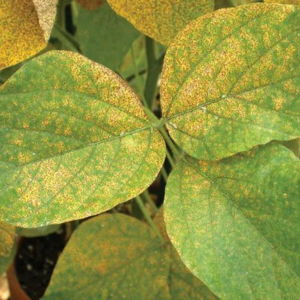
Rust disease is almost harmless at an early stage, but it’s the perfect time to detect and get rid of it. You will find them on the leaves’ surface, affecting annual and perennial flowering plants.
This fungus is like wet rainy season, so you must keep an eye on your plants to minimize the chances of infestation. It is very contagious and can spread quickly by wind and water. If you start seeing symptoms like pale spots, stunted growth, leaf drops, or distorted leaves, then you must check your jasmine plant for Rust.
Jasmine Plant Pest Treatment
- Watering Practices: Stop Showering your plant periodically because rust fungus develops in a wet environment; you can use a watering wand to water your plant at ground level. Remember to water your plant early so that mild morning sunlight will dry its foliage quickly.
- Organic Products: You can sprinkle sulfur powder for treating rust fungus, neem oil, and baking soda spray, which are also effective against rust disease.
- Fungicides: Fungicides containing chlorothalonil, mancozeb, myclobutanil, and trifloxystrobin are optimal for dealing with rust fungus. Check out the product label for application guidelines.
Jasmine Plant Diseases
Root Rot
Root root refers to a disease caused by pathogens like fungi, bacteria, nematodes, and oomycetes, leading to plant roots’ decay. If you are seeing symptoms like stunted growth and pale foliage, root rot might be the cause.
Treatment: Reduce the moisture level of soil and mix fungicide in it.

Sooty Mold
As mentioned above, different Jasmine plant pests like mealybugs and aphids secrete a sticky substance called honeydew, on which sooty mold grows. Its involvement in destroying your plant is not direct, but when it starts covering the plant’s leaves, your plant may find it hard to get an ample amount of sunlight, which slows down the plant’s growth.
Treatment: When the infection is early, wipe out the plant leaves with a damp cloth. Spraying water with a hose pipe can help in clearing the mold. Use insecticide to deter sap-sucking pests.
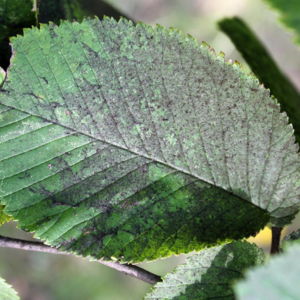
Mosaic Virus
It’s a parasite that, when attached to its host plant, will start destroying it on a molecular level; you will begin noticing symptoms like white & green streaks on leaves, wrinkled or tiny leaves, and dry stems.
Treatment: According to The Old Farmer’s Almanac article about Mosaic Viruses, no therapy has been done to tackle mosaic viruses. There is no option except to destroy the infected plant, or it will start transmitting the virus to other plants in your yard or garden.

Conclusion
Hey, my lovely jasmine enthusiast, I know sometimes these tiny jasmine plant pests test your patience. Here, we have provided information on the jasmine plant pests, symptoms, and treatment at an early stage and after high infestation. I have written all the dos and don’ts so you can tackle these pesky pests from your jasmine plant and garden.

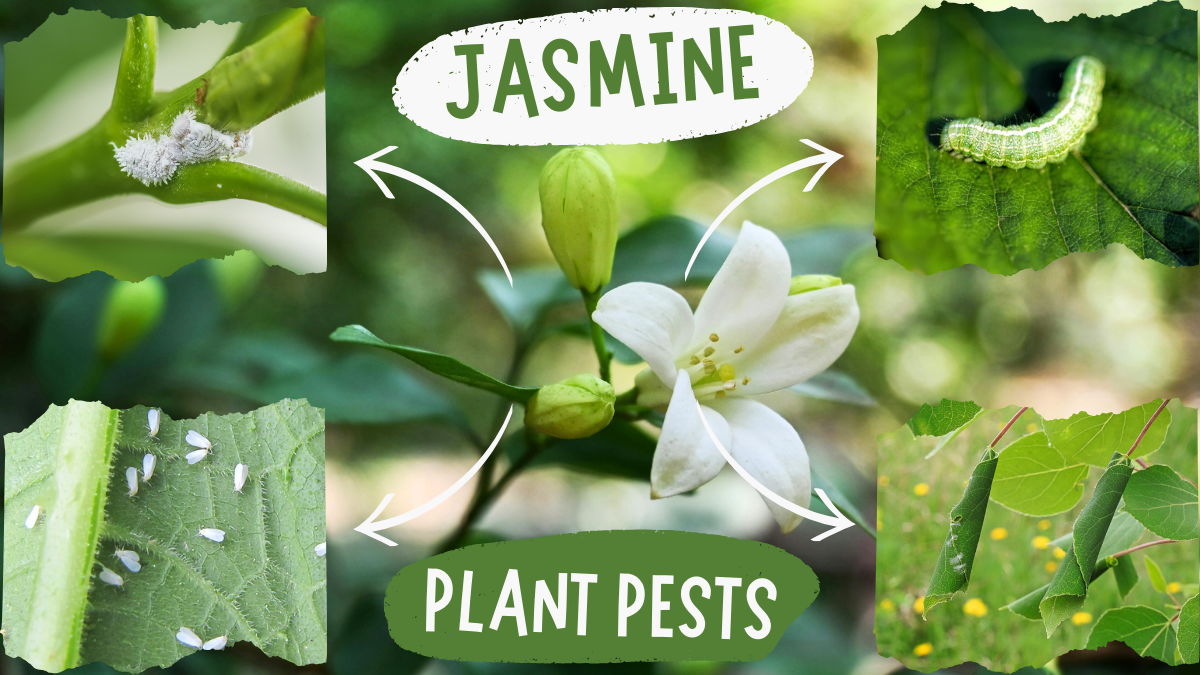
2 thoughts on “9 Common Jasmine Plant Pests -Treatment With Pictures”